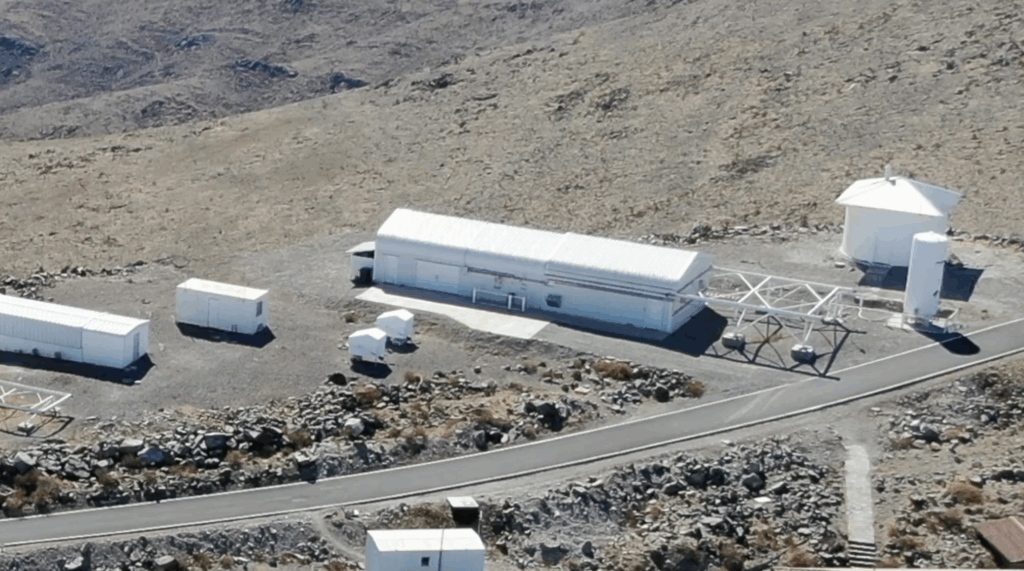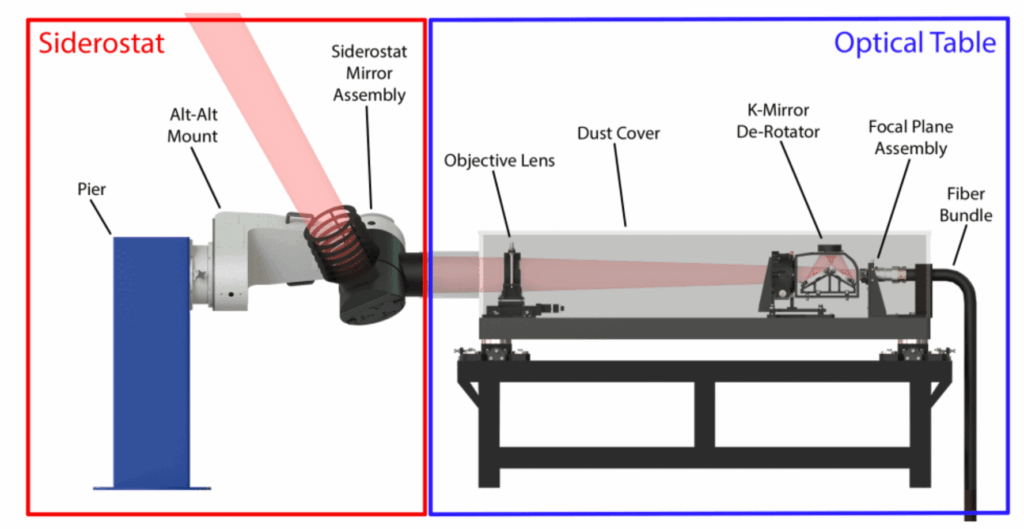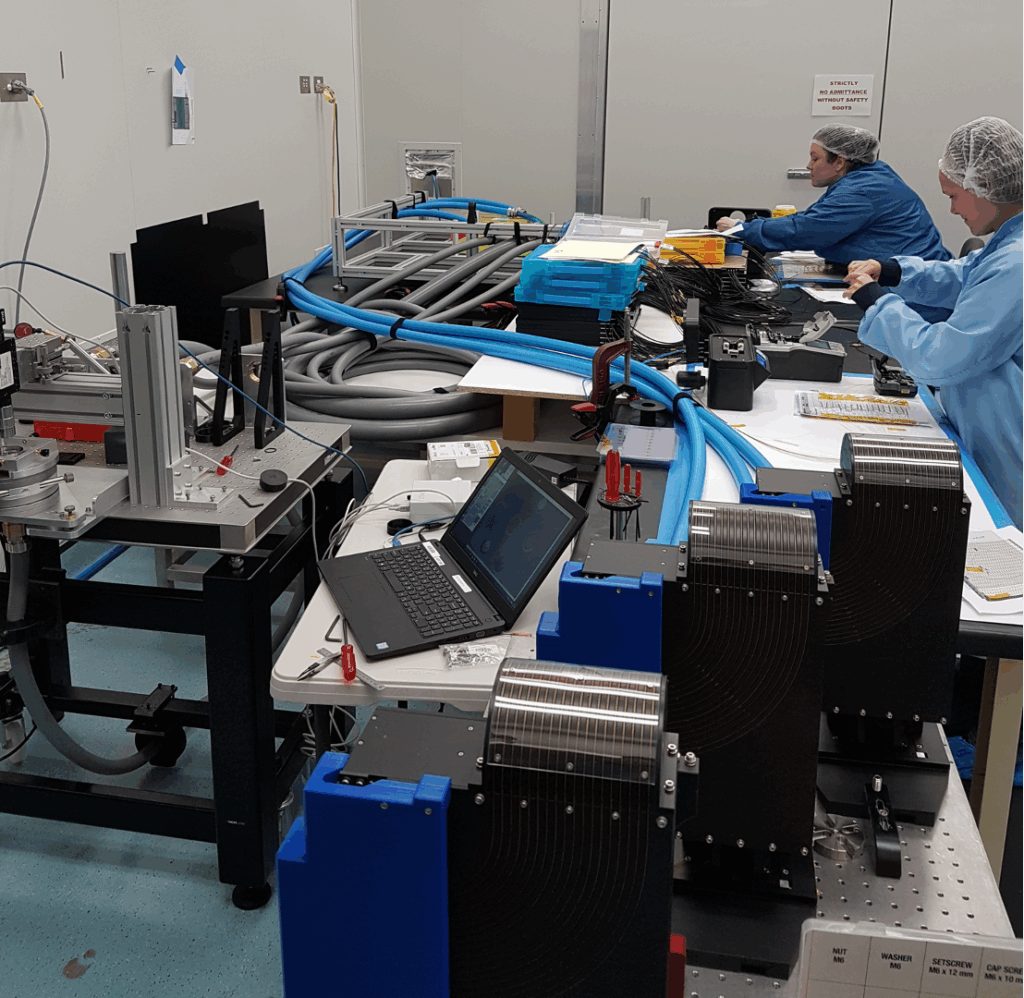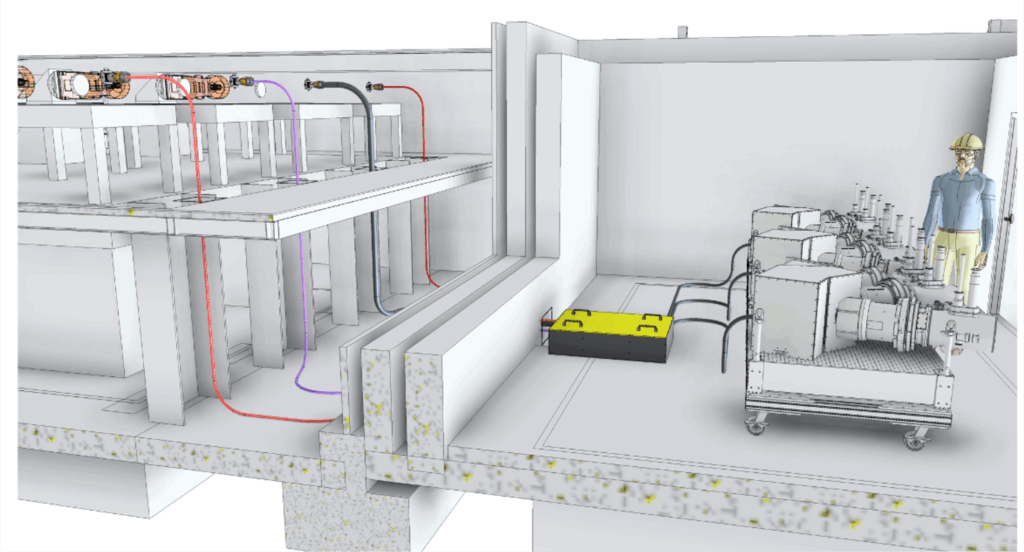The Local Volume Mapper (LVM) is an SDSS-V survey designed to produce the first contiguous, sub-parsec map of ionised gas in the Milky Way and its neighbours. The survey’s dedicated hardware is the Local Volume Mapper Instrument (LVM-I). While the survey defines the science goals and observing strategy, LVM-I is the instrument. Together, they turn wide-field spectra into community data products that anyone can download.

The Local Volume Instrument on Robot Ridge at Las Campanas.
LVM Survey At A Glance
• Target area ≈ 2,500 deg² covering the Galactic plane, the Large and Small Magellanic Clouds, and selected nearby galaxies (CONFIRM)
• Spatial resolution < 1 pc in the Milky Way, ≈ 10 pc in the Magellanic Clouds
• Wavelength range 360 – 980 nm, split into three spectrograph channels
• Planned spectra > 55 million over four years (CONFIRM)
• Sensitivity ~ 1 Rayleigh in H⍺
LVM-I Overview
LVM-I is a fully autonomous facility that combines four small telescopes, an integral-field unit, a fibre system, and three bench spectrographs inside a purpose-built enclosure at Las Campanas Observatory. One telescope gathers science light; the other three record simultaneous calibration data, allowing every exposure to be flux- and sky-corrected.
Telescope Array
• Four custom 16-cm-diameter f/11.4 objectives mounted on precision siderostats
• K-mirror derotators keep position angle fixed
• Dual CMOS acquisition-and-guider cameras on each focal plane maintain sub-arcsecond pointing

Integral Field Unit and Fiber System
• Four separate IFUs: one 0.5-degree science IFU with 1,801 fibres and three smaller IFUs (60 + 59 + 12 fibres) for calibration
• Hexagonally packed 35-arcsec spaxels deliver contiguous coverage across the science field
• An 18.5-metre fibre run feeds a distributor that routes fibres to the spectrographs while minimising blue losses


Spectrographs
- Three DESI-heritage spectrographs covering 360 – 980 nm at R ≈ 4,000
- Thermally controlled to a fraction of a degree C.
- Nine STA 4850 CCDs held at –100 °C by automated liquid-nitrogen coolers

Control and Autonomy
- Robotically scheduled via Python/RabbitMQ control software
- Weather-sensing, emergency shut-offs, and daily LN₂ fills are fully automated
- Typical clear-night open-shutter fraction exceeds 90 percent
- Extensive safety features are built into the LVM software and operational plan
Status
LVM-I achieved first light at Las Campanas in April of 2023, and has been collecting science data nightly since 18 July 2023.

